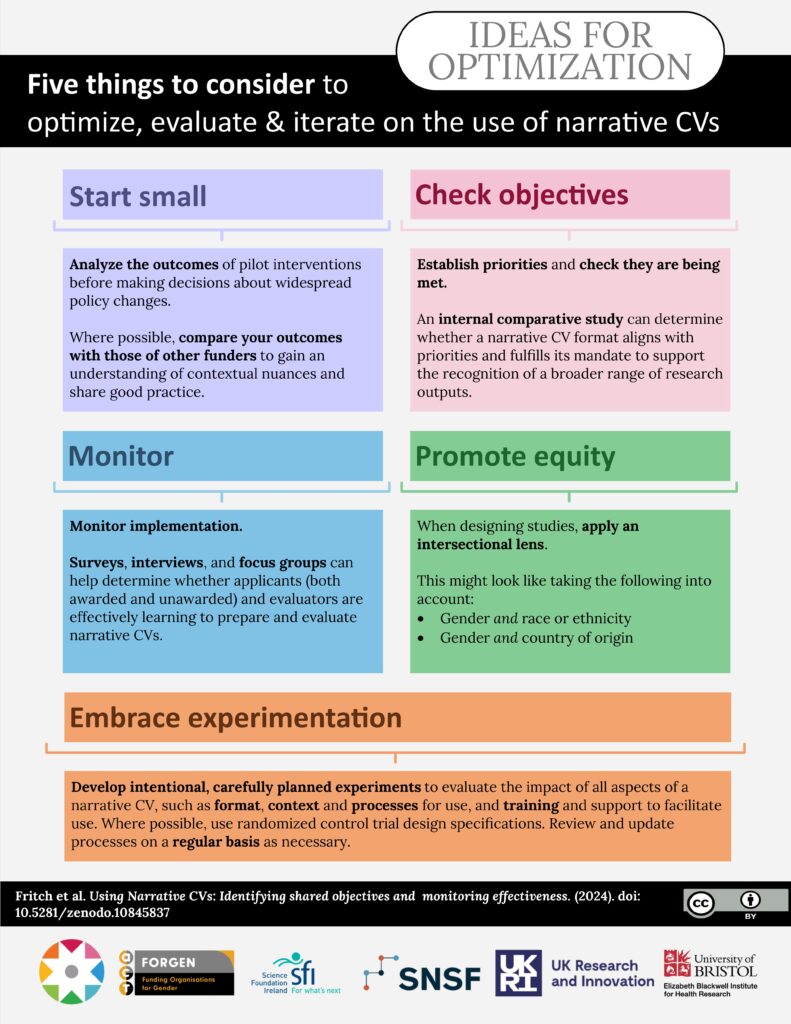This one-page tip sheet is a part of the short report Using Narrative CVs: Identifying shared objectives and monitoring effectiveness.
In February 2022, DORA organized the online workshop series “Using Narrative CVs: Identifying shared objectives and monitoring effectiveness” in partnership with FORGEN CoP, Science Foundation Ireland, the Swiss National Science Foundation, UK Research and Innovation, and the University of Bristol, Elizabeth Blackwell Institute for Health Research. The aim of the workshop was to develop a shared definition for narrative CV and create a list of common objectives for its use in grant evaluation.
This quick reference tip sheet outlines ideas for research funders to optimize, evaluate and iterate on the use of narrative CVs for funding decisions.
- Start small. Analyze the outcomes of pilot interventions before making decisions about widespread policy changes. Where possible, compare your outcomes with those of other funders to gain a richer understanding of contextual nuances and share good practice.
- Check objectives are being met. Establish priorities you want to focus on. An internal comparative study can determine whether a narrative CV format aligns with your objectives and fulfills its mandate to support the recognition of a broader range of research outputs.
- Monitor implementation. Surveys, interviews, and focus groups can help determine whether applicants, both awarded and unawarded, and evaluators are effectively learning to prepare and evaluate narrative CVs.
- Promote equity. Using this format could benefit some more than others, such as non-native speakers or members of underrepresented groups. In designing studies, it is important to apply an intersectional lens (e.g. gender and race/ethnicity; gender and country of origin; etc.) This could also include applicant’s current institutional affiliation and researcher support available from that institution.
- Embrace experimentation. Develop intentional, carefully planned experiments to evaluate the impact of new practices and, where possible, use randomized control trial design specifications. This includes all aspects of the implementation of a narrative CV, such as format, context and processes for use, and training and support to facilitate use. Experimentation and results can also be used as a mechanism to routinely review and update policies and practices.

